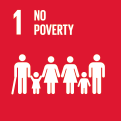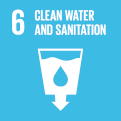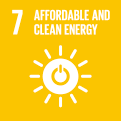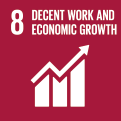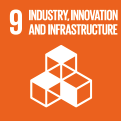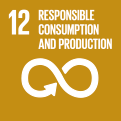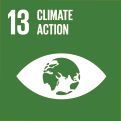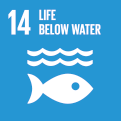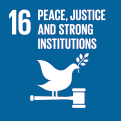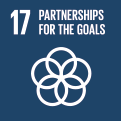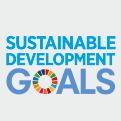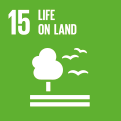
Global level
GOAL 15: Protect, restore and promote sustainable use of terrestrial ecosystems, sustainably manage forests, combat desertification, and halt and reverse land degradation and halt biodiversity loss.
“Protected and restored ecosystems and the biodiversity they support can help mitigate climate change and provide increased resilience in the face of increased human pressures and mounting disasters. Healthy ecosystems also produce multiple benefits for all communities: clean air, water, food, raw materials and medicines, to name a few. To date, progress in preserving and sustainably using terrestrial ecosystems and protecting biodiversity has been uneven. The pace of forest loss has slowed, and improvements continue to be made in managing forests sustainably and safeguarding areas important for biodiversity. That said, accelerating biodiversity loss, along with continued poaching and trafficking of wildlife, is alarming. Moreover, from 1998 to 2013, about one fifth of the Earth’s land surface covered by vegetation showed persistently declining trends in productivity. Soil and land degradation undermines the security and development of all countries.”
Source: United Nations, The Sustainable Development Goals Report 2017
Targets:
-
15.1By 2020, ensure the conservation, restoration and sustainable use of terrestrial and inland freshwater ecosystems and their services, in particular forests, wetlands, mountains and drylands, in line with obligations under international agreements.
- Indicator 15.1.1 Forest area as a proportion of total land area
- Indicator 15.1.2 Proportion of important sites for terrestrial and freshwater biodiversity that are covered by protected areas, by ecosystem type
-
15.2 By 2020, promote the implementation of sustainable management of all types of forests, halt deforestation, restore degraded forests and substantially increase afforestation and reforestation globally.
- Indicator 15.2.1 Progress towards sustainable forest management
-
15.3 By 2030, combat desertification, restore degraded land and soil, including land affected by desertification, drought and floods, and strive to achieve a land degradation-neutral world.
- Indicator 15.3.1 Proportion of land that is degraded over total land area
-
15.4 By 2030, ensure the conservation of mountain ecosystems, including their biodiversity, in order to enhance their capacity to provide benefits that are essential for sustainable development.
- Indicator 15.4.1 Coverage by protected areas of important sites for mountain biodiversity
- Indicator 15.4.2 (a) Mountain Green Cover Index and (b) proportion of degraded mountain land
-
15.5 Take urgent and significant action to reduce the degradation of natural habitats, halt the loss of biodiversity and, by 2020, protect and prevent the extinction of threatened species.
- Indicator 15.5.1 Red List Index
-
15.6 Promote fair and equitable sharing of the benefits arising from the utilization of genetic resources and promote appropriate access to such resources, as internationally agreed.
- Indicator 15.6.1 Number of countries that have adopted legislative, administrative and policy frameworks to ensure fair and equitable sharing of benefits
-
15.7 Take urgent action to end poaching and trafficking of protected species of flora and fauna and address both demand and supply of illegal wildlife products.
- Indicator 15.7.1 Proportion of traded wildlife that was poached or illicitly trafficked
-
15.8 By 2020, introduce measures to prevent the introduction and significantly reduce the impact of invasive alien species on land and water ecosystems and control or eradicate the priority species.
- Indicator 15.8.1 Proportion of countries adopting relevant national legislation and adequately resourcing the prevention or control of invasive alien species
-
15.9 By 2020, integrate ecosystem and biodiversity values into national and local planning, development processes, poverty reduction strategies and accounts.
- Indicator 15.9.1 (a) Number of countries that established national targets in accordance with or similar to Aichi Biodiversity Target 2 of the Strategic Plan for Biodiversity 2011-2020 in their national biodiversity strategy and action plans and the progress reported towards these targets; and (b) integration of biodiversity into national accounting and reporting systems, defined as implementation of the System of Environmental-Economic Accounting
-
15.a Mobilize and significantly increase financial resources from all sources to conserve and sustainably use biodiversity and ecosystems.
- Indicator 15.a.1 (a) Official development assistance conservation and sustainable use of biodiversity; and (b) revenue generated and finance mobilized from biodiversity-relevant economic instruments
-
15.b Mobilize significant resources from all sources and at all levels to finance sustainable forest management and provide adequate incentives to developing countries to advance such management, including for conservation and reforestation.
- Indicator 15.b.1 (a) Official development assistance conservation and sustainable use of biodiversity; and (b) revenue generated and finance mobilized from biodiversity-relevant economic instruments
-
15.c Enhance global support for efforts to combat poaching and trafficking of protected species, including by increasing the capacity of local communities to pursue sustainable livelihood opportunities.
- Indicator 15.c.1 Proportion of traded wildlife that was poached or illicitly trafficked
Last updated: 02. 06. 2023

